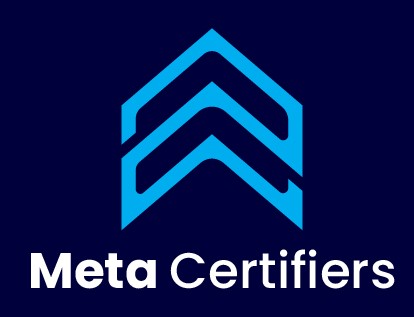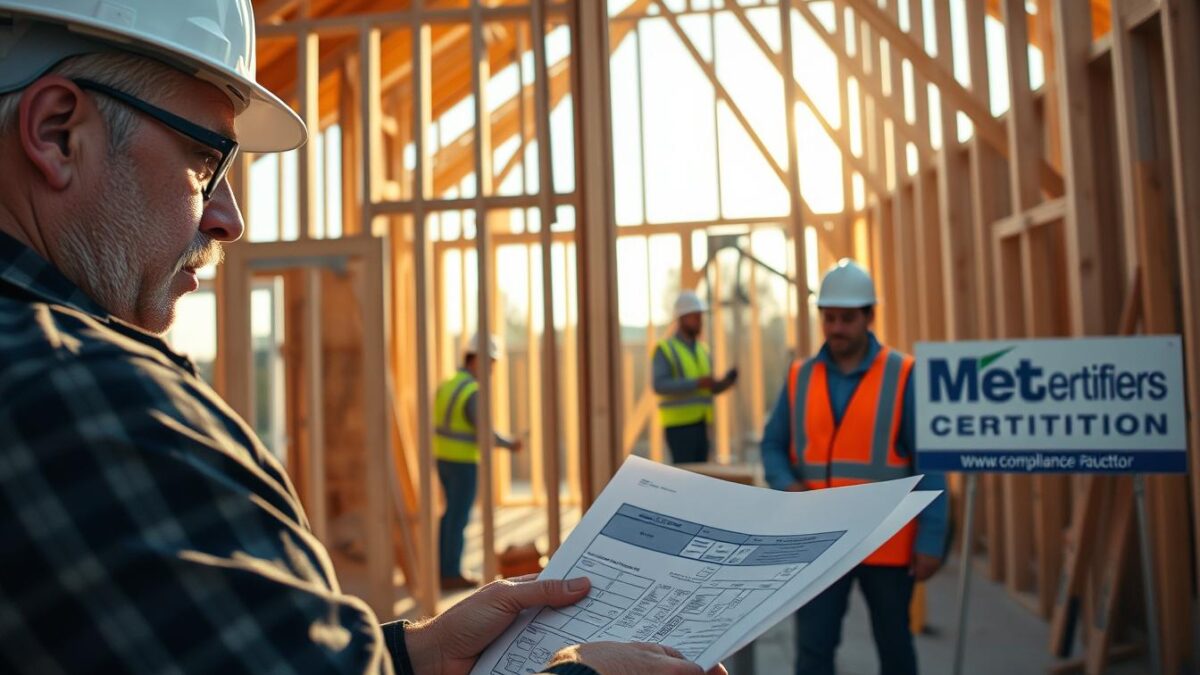Top 3 Challenges in Building Compliance for Residential Construction
Are you finding it challenging to keep up with the ever-changing requirements of building compliance in residential construction? Ensuring that every aspect of your project meets the National Construction Code (NCC) standards can feel overwhelming, even for seasoned builders.
Managing condensation effectively, ensuring proper waterproofing in wet areas, or constructing fire separating walls that meet all safety standards are just a few of the complex tasks that can seem like navigating a minefield of regulations and best practices.
At Meta Certifiers Pty Ltd, we understand the importance of quality and compliance in the residential construction industry. With years of experience, we help builders and developers navigate these challenges and ensure their projects meet the required standards.
Key Takeaways
- Understanding the complex landscape of building compliance in Australian residential construction.
- Identifying the three most significant compliance challenges faced by residential construction projects.
- Recognising the consequences of non-compliance, including costly remediation and project delays.
- The importance of working with certified building professionals to ensure compliance and mitigate risks.
- How Meta Certifiers can provide expert guidance to navigate compliance challenges effectively.
The Critical Importance of Building Compliance in Australia
The importance of building compliance in Australia cannot be overstated, as it directly impacts the quality and safety of residential construction projects.
Building compliance is underpinned by the National Construction Code (NCC), a performance-based code that sets minimum requirements for safety, health, amenity, accessibility, and sustainability in building design and construction.
Understanding the National Construction Code (NCC)
The NCC is a cornerstone of building compliance in Australia, providing a comprehensive framework for the construction industry. It is updated every three years to address emerging issues and improve building standards. The most recent edition, NCC2022, reflects the ongoing efforts to enhance the quality and safety of buildings across the country.
- The NCC establishes minimum requirements for various aspects of building construction, including safety, health, and sustainability.
- It works in conjunction with Australian Standards to create a robust regulatory framework.
- Regular updates to the NCC ensure that it remains relevant and effective in addressing industry needs.
The Impact of Non-Compliance on Residential Projects
Non-compliance with the NCC can have severe consequences, including costly remediation work, legal liability, project delays, and damage to professional reputation. Builders, developers, and homeowners must understand compliance requirements from the planning stage through to project completion to avoid these risks.

- Non-compliance can lead to significant financial penalties and remediation costs.
- It can also result in project delays and increased costs, affecting the overall viability of a project.
- Moreover, non-compliance can damage the professional reputation of builders and developers, impacting their future business prospects.
The Current State of Residential Construction Compliance
As I examine the current landscape of residential construction in Australia, it becomes clear that compliance remains a critical challenge. The residential construction industry in Australia has faced ongoing criticism over build quality and workmanship issues, significantly impacting homeowners.
Common Compliance Issues Facing Australian Builders
A significant part of the problem lies in the lack of proper skills and training within the industry. Many builders and subcontractors lack experience in building homes and often don’t fully understand building materials, quality standards, and regulations. Common issues include documentation failures, material substitutions, and inadequate quality control processes. These problems are exacerbated by the fragmented nature of the construction industry, with multiple subcontractors and suppliers creating coordination challenges that can lead to compliance failures.
The Cost of Non-Compliance for Homeowners and Developers
The financial impact of non-compliance on homeowners and developers is substantial, including remediation costs, decreased property values, and ongoing maintenance issues. Non-compliance not only affects individual projects but also impacts the broader industry reputation and consumer confidence in new residential construction. Recent case studies have demonstrated the real-world consequences of compliance failures in residential projects across Australia, highlighting the need for improved compliance practices.
Top 3 Challenges in Building Compliance for Residential Construction
The Australian residential construction industry faces numerous challenges in maintaining building compliance, with several key issues consistently causing problems for builders and developers. Ensuring quality and adherence to standards is crucial in this highly regulated sector.
Overview of the Most Significant Compliance Hurdles
The residential construction industry encounters several significant compliance challenges. Three of the most critical issues are wet area waterproofing, condensation management, and fire separating walls. These areas are prone to compliance failures due to their complexity and the specialized knowledge required to address them effectively.
- Wet area waterproofing failures can lead to significant structural damage and health hazards.
- Inadequate condensation management can result in mold growth and compromised indoor air quality.
- Non-compliant fire separating walls pose serious safety risks in the event of a fire.
These compliance issues are further complicated by the fragmented nature of the construction industry, where multiple subcontractors and suppliers must coordinate their efforts.
| Compliance Challenge | Common Issues | Consequences of Non-Compliance |
|---|---|---|
| Wet Area Waterproofing | Inadequate material selection, poor installation practices | Structural damage, mold growth, health hazards |
| Condensation Management | Insufficient ventilation, incorrect insulation installation | Mold growth, reduced indoor air quality, structural damage |
| Fire Separating Walls | Incomplete or incorrect installation, lack of proper sealing | Increased risk of fire spread, compromised safety |
Why These Issues Persist in the Australian Construction Industry
Despite increased regulation and industry awareness, these compliance issues persist due to several systemic factors. The lack of specialized knowledge and training among builders and contractors contributes significantly to these challenges. Additionally, economic pressures and tight project schedules often lead to compromises in compliance areas that may not be immediately visible.
The construction industry’s fragmented nature, with many disparate parties involved, makes it difficult to ensure full compliance across all partners and teams. Each entity may use its own metrics to measure compliance, further complicating the issue.
Addressing these challenges requires a concerted effort to improve industry practices, enhance training and knowledge sharing, and ensure stricter adherence to regulations and quality standards.
Challenge 1: Wet Area Waterproofing Compliance
Wet area waterproofing poses a significant challenge in residential construction compliance, requiring adherence to stringent standards and regulations.
Effective waterproofing is crucial in areas such as bathrooms and laundry rooms, where water exposure is high. The National Construction Code (NCC) and AS3740-2021 standards provide the framework for achieving compliance in wet area waterproofing.
Understanding NCC Requirements and AS3740-2021 Standards
The NCC2022 offers two deemed-to-satisfy pathways for wet area waterproofing compliance: either Part 10.2 of the ABCB Housing Provisions or AS3740-2021 along with specific clauses from the ABCB Housing Provisions. It’s critical to choose one pathway and adhere to its requirements without mixing standards.
Critical technical requirements include ensuring proper floor waste falls (minimum continuous fall of 1:80 and maximum of 1:50), specifying appropriate door frames and architraves, and correctly installing drainage flanges.
- Proper substrate preparation is essential for effective waterproofing.
- Membrane application must be carried out according to manufacturer specifications and standards.
- Adequate treatment of penetrations and junctions is crucial to prevent water ingress.
Common Waterproofing Failures and Their Consequences
Common failures in waterproofing include errors in membrane application, inadequate substrate preparation, and poor treatment of penetrations and junctions. These failures can lead to significant issues, including structural damage, mold growth, and health hazards, resulting in costly remediation.
Best Practices for Achieving Waterproofing Compliance
To achieve compliance, it’s essential to focus on proper planning, engage qualified installers, use quality materials, and implement thorough inspection protocols. Documentation and quality control measures are also vital to ensure that waterproofing installations meet the required standards.
By understanding the requirements and implementing best practices, builders can mitigate the risks associated with wet area waterproofing and ensure compliance with relevant standards.
Challenge 2: Condensation Management and Roof Space Ventilation
The importance of proper condensation management in residential buildings cannot be overstated, particularly in varying Australian climate zones. Effective condensation management is critical for preventing issues such as mould growth, structural damage, and reduced indoor air quality, all of which can compromise a building’s longevity and compliance with building standards.
NCC2022 Requirements for Different Climate Zones
The National Construction Code 2022 (NCC2022) has introduced significant amendments to condensation management standards, particularly for climate zones 4 to 8. These changes are designed to ensure that buildings are constructed to manage condensation effectively, thereby reducing the risk of associated problems.
The NCC2022 requirements include:
- Vapour permeance requirements as outlined in Clause 10.8.1
- Ducting exhausts to external air as per Clause 10.8.2
- Ventilated roof spaces as specified in Clause 10.8.3
| Climate Zone | NCC2022 Requirements |
|---|---|
| Climate Zone 4 | Vapour permeance and ventilated roof spaces |
| Climate Zone 6-8 | Enhanced vapour permeance and roof space ventilation |
The Science Behind Effective Condensation Control
Understanding the science behind condensation formation is crucial for effective condensation control. Factors such as dew point calculation, relative humidity, and thermal bridging play significant roles in condensation management. By grasping these principles, builders can implement strategies to minimize condensation risks.
Implementation Strategies for Proper Ventilation Systems
To achieve proper ventilation, several strategies can be employed, including the use of roof space ventilation options, appropriate membrane selection, and effective exhaust systems. By implementing these strategies, builders can ensure that buildings are well-ventilated, reducing the risk of condensation-related issues.
Future-proofing designs in anticipation of proposed NCC2025 updates, which may extend ventilated roof space requirements to climate zones 4 and 5, is also a prudent approach. This proactive stance can help builders stay ahead of regulatory changes and ensure that their projects remain compliant with evolving standards.
Challenge 3: Fire Separating Walls and Safety Compliance
Fire separating walls play a crucial role in preventing the spread of fire between attached dwellings, highlighting the need for strict compliance with safety regulations. Ensuring that these walls are properly constructed and maintained is essential for the safety of occupants in residential buildings.
Critical Requirements for Fire Safety in Attached Dwellings
The National Construction Code (NCC) outlines specific requirements for fire safety in attached dwellings, focusing on the construction and performance standards for fire separating walls. These standards are designed to prevent the spread of fire between buildings, ensuring occupant safety. Compliance with these standards is not only a regulatory requirement but also a critical aspect of quality construction.
Eave Separation and Items Crossing Fire Walls
Eave separation is a critical aspect of fire safety in attached dwellings. Eaves must be designed and constructed to prevent the spread of fire between buildings. This includes ensuring that eaves are properly separated and that items crossing fire walls, such as roof battens and sarking, comply with specific size and material requirements. For instance, only roof battens with dimensions of 75x50mm or less are permitted to cross fire walls.
Ensuring Compliance with Fire Resistance Standards
To ensure compliance with fire resistance standards, gaps around the perimeter of fire separating walls must be properly packed with mineral fiber or other fire-resisting materials. Additionally, service penetrations through these walls must be done in accordance with manufacturer specifications for tested systems. Regular inspections and quality control measures are essential to maintaining compliance throughout the construction process.
By focusing on these critical aspects of fire safety and compliance, builders can ensure that residential construction projects meet the required standards, enhancing the safety and quality of the buildings.
Building a Compliant Future for Australian Residential Construction
To build a compliant future, the Australian residential construction industry must prioritize quality and adherence to standards. The top three compliance challenges – wet area waterproofing, condensation management, and fire separating walls – require immediate attention.
By fostering a culture of quality and continuous improvement, the industry can move forward. This involves emphasizing the need for ongoingeducation and trainingfor builders and developers. Balancing speed and quality in construction projects is crucial, moving away from practices that compromise quality.
Working with certified building professionals like Meta Certifiers can help navigate the complex compliance landscape. Effective quality control processes and documentation ensure compliance throughout the construction process.
For expert building compliance assistance, contact Meta Certifiers Pty Ltd at[email protected]or1300 740 378. Investing in proper compliance from the start saves time, money, and stress.





